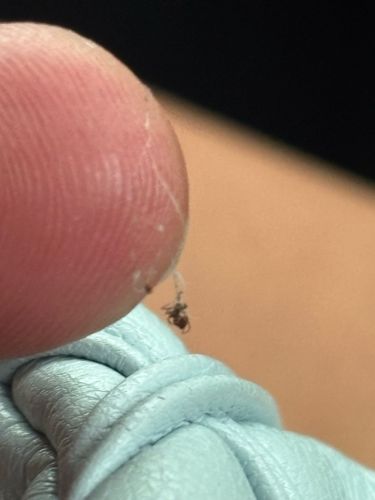Broad-nosed Weevil (immature)
Scientific Name: Curculionidae (subfamily Entiminae, likely a nymph)
Order & Family: Order: Coleoptera, Family: Curculionidae
Size: Typically 2-12 mm as adults; the specimen appears to be in the lower end of this range or a juvenile stage, likely around 1-2 mm.

Natural Habitat
Leaves, stems, and roots of various plants; both outdoors and indoors on houseplants or stored products.
Diet & Feeding
Broad-nosed weevil larvae often feed on plant roots, while adults typically feed on plant foliage, stems, or fruits.
Behavior Patterns
Many broad-nosed weevils are nocturnal and may drop to the ground or feign death when disturbed. Larvae are typically subterranean. This image shows a very small individual, possibly a newly hatched larva or very young nymph, hanging by a silken thread, which is not typical for most weevils but can happen if disturbed or to find a new location.
Risks & Benefits
Generally considered agricultural or garden pests as both adults and larvae can cause damage to plants by feeding on roots, leaves, and other plant parts. They do not pose a direct risk to humans, nor do they typically offer significant benefits aside from being part of the food chain for other organisms.
Identified on: 9/27/2025